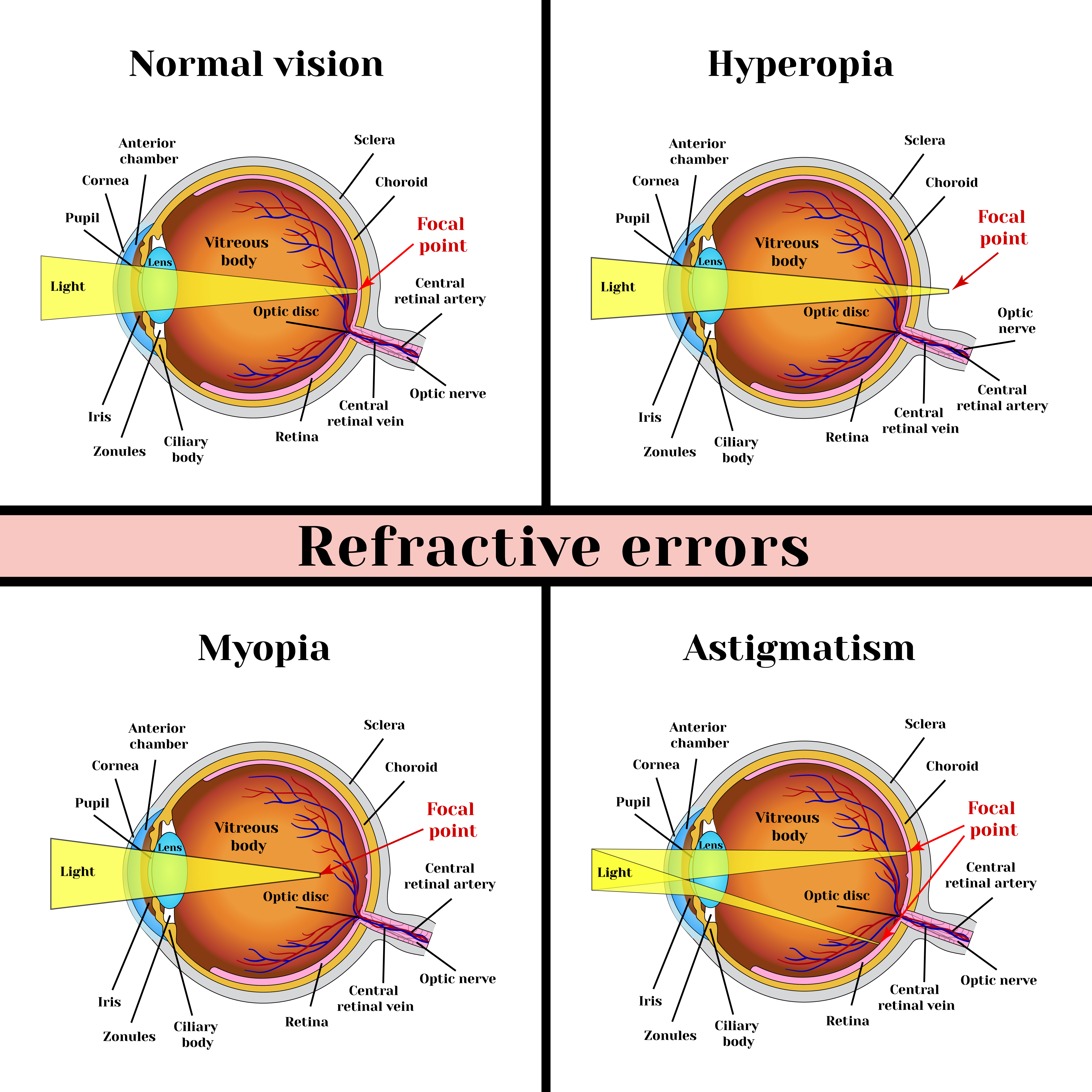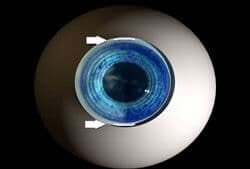Can Cataract Surgery Treat Astigmatism?
June 22, 2023
Do you have astigmatism? You may wonder if you can treat the refractive error during cataract surgery.
Cataract surgery is the only way to treat cataracts. If you have cataracts affecting your quality of life, your cataract surgeon has likely recommended having cataract surgery.
But cataract surgery can do much more than restore the vision loss due to cataracts. A critical component of cataract surgery involves choosing an intraocular lens (IOL) that replaces your natural lens.
Depending on the IOL you choose, you can improve your vision beyond your pre-cataract capabilities by correcting refractive errors, including astigmatism. But how? Keep reading to learn more about what astigmatism is, how cataract surgery works, and if cataract surgery can treat astigmatism!
What is Astigmatism?

Astigmatism is a refractive error that occurs when the shape of the eye is irregular and looks more like a football rather than like a sphere. Astigmatism is different from nearsightedness and farsightedness.
These refractive errors occur when the front of the eye is either too elongated or too short. But if you have astigmatism, it will cause light to refract unevenly, meaning that you'll have blurry or distorted vision at all distances, no matter what you're trying to see.
It will be hard to see up close or far away if you're nearsighted or farsighted. If you're nearsighted, also known as myopia, you can see well up close but not far away. If you're farsighted, also called hyperopia, you can see well far away, but you'll struggle to see things right in front of you.
Those with astigmatism may have other refractive errors, making their vision even more distorted. Most cases of astigmatism are mild, but nearsighted or farsighted patients may also have some degree of this refractive error.
Glasses and contact lenses can correct astigmatism. When you have cataract surgery, you may be able to reduce the need for visual aids, resulting in the best vision of your life.
Cataract Surgery
Cataract surgery treats cataracts by removing them and the natural lens entirely. Cataracts form on the eye's natural lens.
The only way to remove a cataract is to remove the lens itself. After removing the natural lens, it's replaced with an artificial lens called an intraocular lens, or IOL.
 There are several different kinds of IOLs. Most IOLs are designed to correct presbyopia. Presbyopia is an age-related eye condition that is common in cataract patients.
There are several different kinds of IOLs. Most IOLs are designed to correct presbyopia. Presbyopia is an age-related eye condition that is common in cataract patients.
If you have presbyopia, you'll find it more challenging to see things up close due to the natural lens losing its flexibility as a result of the aging process. You may need reading glasses to see the newspaper or look at the menu when you go out to eat.
One kind of IOL patients can choose from are monofocal lenses. These IOLs are the most basic kind.
They can help you see better up close or far away. You can also have one of each placed in each eye to achieve monovision. If you choose monofocal IOLs, these intraocular lenses are covered by insurance, making them ideal for patients worried about affordability.
There are also premium lenses, which can help you improve your vision at all distances, including up close, far away, and intermediate distances while correcting refractive errors. Premium lenses have an out-of-pocket cost, meaning insurance will not cover them.
However, only one kind of intraocular lens is specifically designed to correct astigmatism, and that’s a toric lens. If you're a patient with astigmatism who requires cataract surgery, this is often the best-suited IOL for your visual needs.
What is a Toric IOL?
Toric IOLs correct astigmatism. They work just like toric contact lenses.
But what is a toric lens? Most lenses look like a slice from the end of a sphere, which correlates to the shape of the eye.
Toric lenses look like they're cut from the edge of a torus. A torus is a geometric shape that looks like a perfectly round donut.
This shape better fits the football shape of the eye for a patient with astigmatism. The lens design can also compensate for the shape of the eye, changing the way light refracts through the eye at different angles.
When you choose a toric IOL for cataract surgery, the lens is very carefully positioned inside your eye. During cataract surgery, your cataract surgeon will create an incision in the eye and into the lens capsule where your natural lens is.
After removing the natural lens, your surgeon will fold up the toric lens and insert it through the incisions into the lens capsule. Once inside, it's unfurled and carefully placed to correct your astigmatism.
For any patient with astigmatism, the toric IOL is a great choice. Typically, toric IOLs can correct astigmatism up to 4.75 diopters. But it isn't the only way to correct astigmatism during cataract surgery.
Limbal Relaxing Incisions
Patients with astigmatism may also receive limbal relaxing incisions (LRI) during cataract surgery. Limbal relaxing incisions are tiny incisions created in the cornea. A laser will provide better astigmatism correction for optimal results with limbal relaxing incisions.

The laser can slightly change the shape of the eye, correcting a small degree of astigmatism. Along with a toric IOL, your cataract surgeon may be able to correct your astigmatism to a higher degree.
Limbal relaxing incisions may be included in laser-assisted cataract surgery. Laser-assisted cataract surgery is often available to patients who choose a premium IOL.
Laser-assisted cataract surgery is more precise than traditional cataract surgery and often has better results. It's an option worth considering if you want a toric IOL or other premium IOLs.
Toric IOLs vs. Monofocal IOLs
Standard monofocal lenses are the only IOLs covered by insurance with the price of cataract surgery. Premium lenses, including toric lenses, come with an out-of-pocket expense.
However, toric lenses may not have as much out-of-pocket expense as other more advanced premium lenses. Many premium lenses also come in toric models.

To learn more about your IOL options, talk to your ophthalmologist. They can recommend the best IOL based on your lifestyle and visual needs. A toric IOL is an excellent choice if you have astigmatism and want better vision after cataract surgery.
Do you think it may be time for cataract surgery? Schedule your cataract consultation at Washington Eye Specialists in Washington, D.C., today! Haven't you waited long enough for better vision?



